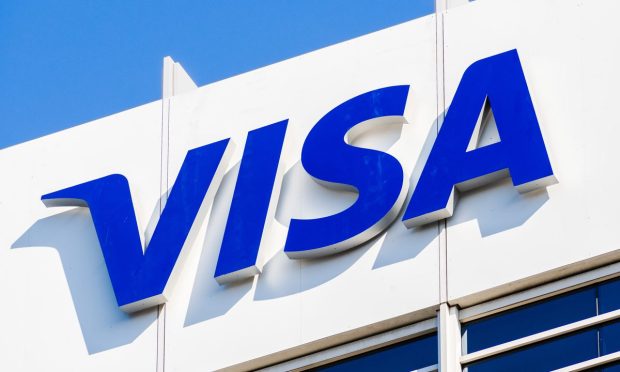Visa: Consumer Spending Tops 2019 Levels as Cardholders Shake Off Inflation and War

For Visa, neither war in Europe nor inflation can stop the consumer juggernaut, or the continued pivot toward tap to pay.
B2B spending is on a tear, too.
By the numbers, Visa’s fiscal second quarter showed that consumers wielded their cards in force, topping 2019’s levels in several key categories, and travel roared back to nearly touch pre-pandemic activity.
The inexorable trends hold, according to commentary from CEO Al Kelly and CFO Vasant Prabhu on the post-earnings call Tuesday.
U.S. payments volume grew 16% year over year in the latest quarter, up 44% vs. 2019, management said. Prabhu said that credit spending, domestically, was up 27%, and was up 35% over 2019’s levels.
See also: Inside Visa’s Fraud-Fighting Cyber Machine
Overall the company said that purchase volumes — even after suspending operations in Russia — were up 17% to $2.8 trillion. Of metrics to note: Cross-border transactions were up 48%, driven by “robust” travel.
Total processed transactions, which represent transactions processed by Visa, for the three months ended March 31, were 44.8 billion, a 19% increase over the prior year.
The company said in supplementals released alongside earnings that credit payments volume was up 22% year over year in constant dollar terms, to a total $1.3 trillion; debit volume gained 12% to $1.4 trillion. Total number of cards out in the field, so to speak, were up 9%. Credit card count gained 4% to 1.2 billion while debit cards gained 12% to 2.7 billion.
To get a sense of the rebound above pre-pandemic levels, CEO Kelly said that processed transactions were 138% above levels seen in 2019.
Volumes, according to commentary on the call, have seen no impact vis-a-vis inflation, supply chain issues or the war in Ukraine. The company saw a greater than 10 percentage point improvement, quarter over quarter, in travel, retail goods, food and drug spending.
Debit remains 20% above the pre-pandemic trend line across all spending categories, the company said.
“In consumer payments, we continue to displace cash at a strong rate. In Q2, we saw debit cash volumes to grow 2% while debit payments volumes grew 12%. Cash displacement continued around the world, year over year, across debit and credit. There were 7.9 billion more payments transactions and 16 million less cash transaction,” Kelly said.
Drilling down a bit into demographics, and with a nod to co-branded cards, spending by affluent consumers was above 2019 levels in several markets, including the U.S. and the U.K.
Tap to Pay, B2B
As has been spotlighted in past earning reports, Kelly noted that tap to pay is continuing to gain ground — Target has become one of the first retailers to see more than 50% penetration of tap to pay as a percentage of face-to-face payments.
Cross-border payments have been given a tailwind by B2B efforts — including B2B Connect. Visa Direct transactions grew 20% as measured year over year, driven by remittances and earned wage access, even with the impact of the pullout from Russia. Prabhu said that B2B volumes were 29% higher than last year and 38% higher than 2019. Kelly noted that B2B represents a $122 trillion opportunity, of which $20 trillion is in the card space and $10 trillion rests within cross-border.
Kelly noted, too, that the company has passed the 3.5 billion token mark, with more than 8,600 issuers across 150 markets.
Read more: Paysend CEO: Cross-Border Payments Have Failed Consumers and SMBs
“At 1.2 million merchants, tokens have led to a 2.5% increase in approval rates and a 28% reduction in fraud rates this past quarter,” he said on the call.
Prabhu said on the call that March cross border-travel, as measured in an index, was 90 vs. 2019, indicating that spending is about 90% of those levels.
Looking beyond the end of the quarter, Prabhu noted that spending remains robust, through the first three weeks of April, as payments volume in the U.S. was up 12%, with debit up 2% (lapping last year’s stimulus payments) and credit up 26%. Spending growth relative to three years ago gained 45%.
At a high level, said Kelly, “We’re continuing to look at the ability to pay gig economy workers, which is a growing segment around the world. We’re looking at global money movement. … We’re looking at digitizing disbursements by replacing checks and ACH. There are applications everywhere.”
